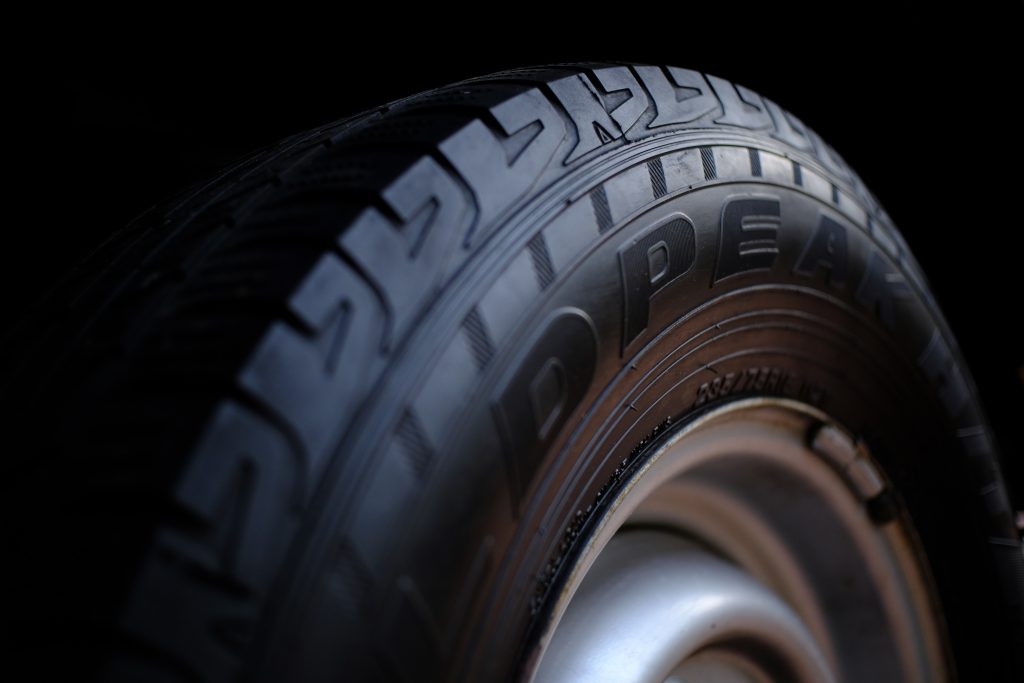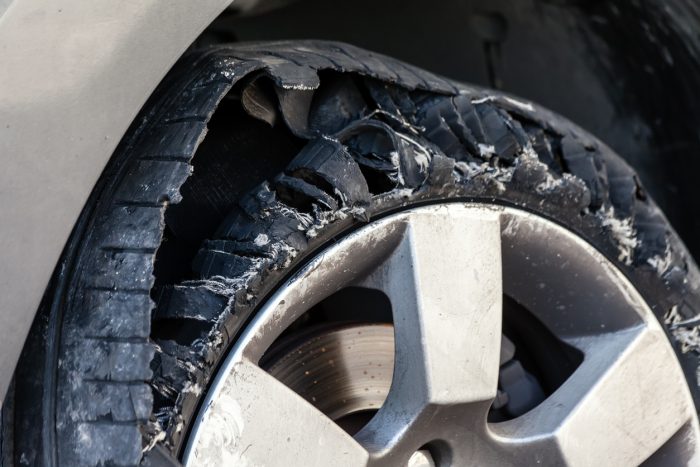
There can be significant dangers to safety posed by old tyres. Especially during the summer when warmer roads put more strain on them.
Because of this, the Government banned tyres older than 10 years from heavier vehicles in 2021. But what about ageing tyres on regular cars? Read on to find out.
What’s the law on car tyres?
From January 2021, tyres older than 10 years were banned from the front axles of several vehicles. This included lorries, coaches, buses, and from both axles of minibuses.
The government took action to ban old tyres following a coach crash on the A3 that killed three passengers in 2013. An inquest blamed the tragedy on a 19-and-a-half-year-old tyre blowing out.
Will cars see the same bans as HGVs?
There are currently no plans to ban car tyres older than 10 years from regular cars.
This could change, of course. If statistics show that the ban on older rubber for trucks has a positive impact on safety, we may see a change in the law.
It’s currently “not recommended, to use tyres aged more than 10-years on other axles.” So, we recommend checking yours to see if they’re due for a change.

Are older tyres dangerous?
It depends on their age. But generally, the older a tyre gets, the less safe it becomes.
Tyres have a tough life. Over time, heavy wear impacts their structure, making them more likely to fail. And age makes their rubber less pliable which affects their ability to stop quickly.
The Royal Society for the Prevention of Accidents (RoSPA) recommends that “tyres are replaced with an equivalent new unit well before the legal minimum tread limit of 1.6mm is reached. Ideally, when they reach 3mm.”
Why do tyres deteriorate with age?
Rubber is a compound, as it gets older, the cocktail of ingredients weaken and break down. This results in the material hardening, and as it becomes more brittle, it can crack.
Extreme temperatures cause tyres to expand and contract. This constant movement can weaken the structure, again resulting in cracks. The UV rays from sunshine can have the same effect. And it’s impossible for most people to keep their wheels out of the sun.
Tyre compounds include chemicals that are designed to prolong the tyre’s life. But to work effectively, the tyre needs to be rotating to distribute the anti-ageing chemicals.
So, if you’re not regularly driving, the anti-ageing chemicals won’t be able to do their job. And the sun’s UV rays will have extra time to weaken them while your car sits idle.
Do you need new tyres to pass the MOT?
Just because a tyre is old doesn’t mean it will automatically fail the MOT test.
However, if it has cracks in it, it will fail the MOT. This is because the cracks can be a symptom of other serious structural problems. And trust us, you’d rather have a new tyre than a dangerous blow out.
How can you tell the age of your tyres?
There’s a stamp showing the manufacture date on every tyre. You just need to know where to look.
First find the writing on the sidewall. You’re looking for an embossed panel, probably with the letters DOT in front of it. In the panel, you’ll see four numbers. The first two digits stand for the week of the year, the second two the year. So 0223 is the second week of January in 2023.
If you’re at all concerned about the state of your tyres, find a technician who’ll be able to advise you.
My motorhome (purchased privately in May 2022) was 18 years old & had fairly decent looking tyres on the rear axle. I wanted to go on holiday with my wife & wanted to check the tyre pressures. Whilst inflating the near side rear tyre at a service station after travelling around 25 miles, it exploded. I had been travelling north at an average speed of 60mph on the motorway. The tyres were 10years old. A fellow motorist informed me (as he knew how to read the date stamp). I was shocked and had to get them changed asap.
Modern car tyres seem not to last too long anymore. In the last 2 years I have had to replace 2 sets of tyres (on two cars) as they all showed signs of perishing. They all had at least 5mm of tread and had done less than 20,000 miles.
I had an MOT advisory on my 9 year old smart car ( on its second ser of tyres) because small cracks were appearing where the tread meets the sidewall. The tyres were classed as mid price range and had been on the car for about 5 years and still had 5mm tread depth across the whole surface. The car lives outside on the driveway and UV degradation was blamed for early degradation
As apprentice mechanics (in the seventies) at the weekly, Friday round up, we were frequently asked: “what keeps the car on the road?” Replies: gravity, sand in the boot, heavy passengers etc, etc.
Tyres, was the instructors reply, just that and good ones!
This is really good advice.
Can I add Touring Caravan Tyres Which in many cases can be at least 10 yrs old but still have lots of tread depth, however the tyre walls will have deteriorated bearing in mind they will have been standing in the same position for long periods without any rotation.
Please do not forget your Trailer!
Whether a Caravan or a small one used twice a year to take garden waste to the tip, most people seem to forget about tyre health on their trailers, or to carry a spare!
My own small 5’x3′ (1.5×0.9m) trailers didn’t come with a spare, nor a matching Wheelbrace.
Check their tyre pressures after storage, check for cracks and splits, especially after storage on their wheels, and spin those wheels while jacked up and replace any rumbly or stiff wheel bearings.
The 20 Years living in Cornwall and driving on tourist routes taught me very graphically just how many holidays are ruined each year hy failure to carry out these simple checks soon enough before each journey to correct any faults.
You might not be injured, but what about the Baby in that car behind you, or in the opposite lane? People Die.